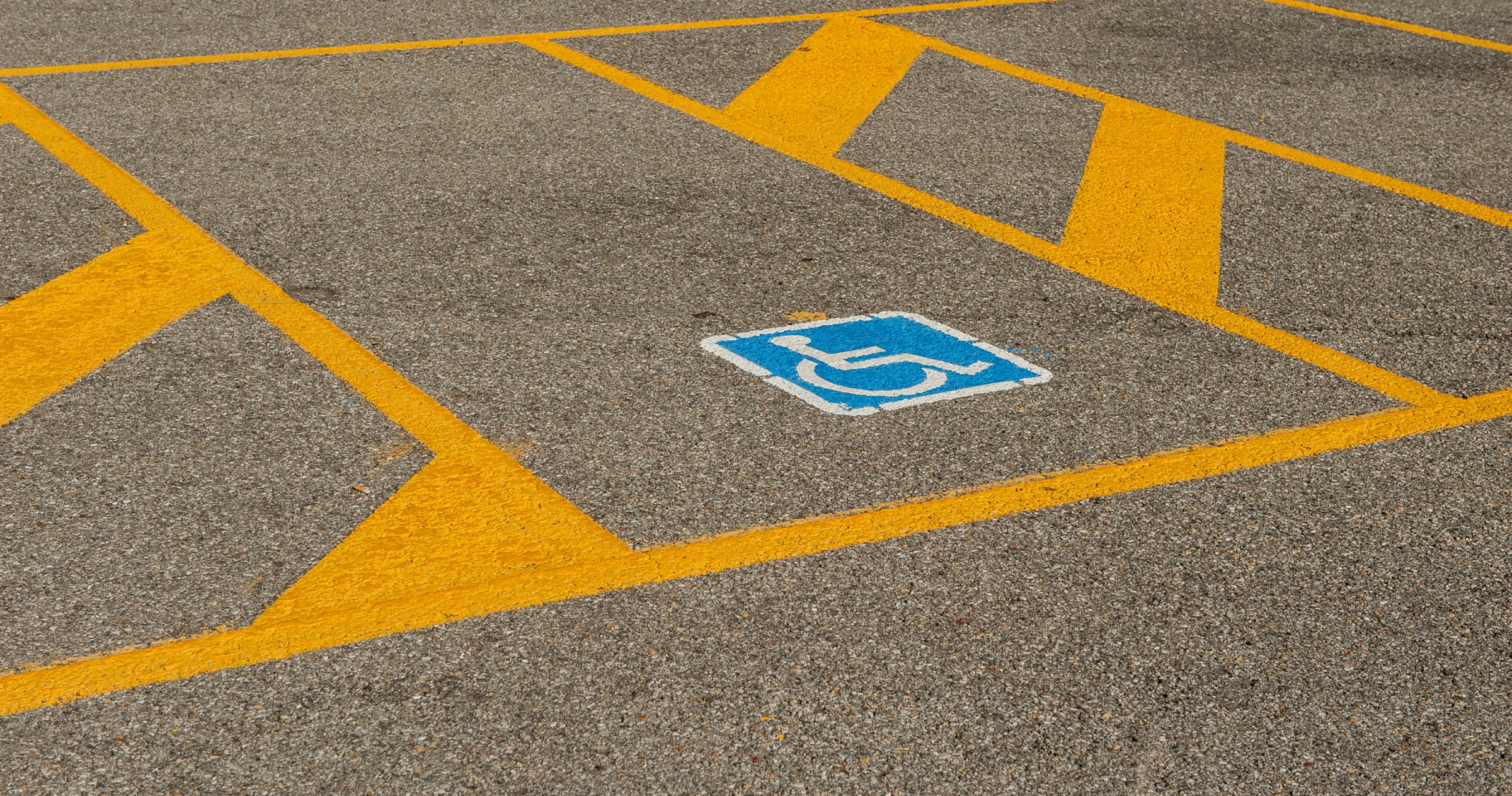Get to know our history with blue badge
In the UK, the Department for Transport (DfT) oversees the administration of the Blue Badge scheme. This program makes it easy for disabled citizens to get the badges to park their cars in approved spots.
The Blue Badge scheme enables more than three million disabled people across the UK to park nearer their destination, often for free and without time restriction. The scheme helps badge holders to access work, leisure, friends, family and other amenities and services more easily. It also plays a role in the Government’s Inclusive Transport Strategy, which aims to make the UK’s transport network fully inclusive by 2030.
Transforming a legacy service
Eligible individuals can apply for a Blue Badge online, in person, by post or by phone. After the DfT received complaints about the digital service’s functionality, they saw an opportunity for improvement and reached out to Valtech who helped to make the online process the quickest and most efficient for applicants and government alike.
DfT initially engaged Valtech to transform the performance of the legacy service. In close collaboration with DfT, service users and the 207 badge-issuing local authorities, we developed, designed and deployed a new online Blue Badge application service that improved the user experience and streamlined the process.
Within four months of launch, digital take-up improved from 37% to 57%, the completion rate more than doubled from 33% to 70%, and processing time was reduced from 29 to 19 days. Applicants were getting a better experience and receiving their badges more quickly. In addition, £3m of processing costs are saved every year.
Setting up for ongoing improvement
Delivering continual improvements requires product owners to view digital services through two different lenses. The first involves refining and improving the existing service, finding bottlenecks, blockers and opportunities to improve the user journey and experience. In parallel, through the second lens, longer-term strategic opportunities are the focus, such as integrations and process improvements.
The Blue Badge team at Valtech is committed to ensuring that the service was maintained and continuously improved. Achieving that aim involves making incremental improvements to the service and seizing new opportunities for citizens, administrators and policymakers. Creating an increasingly frictionless Blue Badge Digital Service would continue to minimize the number of manual applications, increase the number of online completions and, at the same time, maximize access to the service for everyone who needs to use it.
Streamlining the service
We tapped into the user intelligence and analytics to improve the existing service. The volume of feedback drastically increased with the growth in digital take-up, with DfT now receiving up to 8,000 service-user surveys every week. We identified respondents who’d be happy to contribute to deeper research and conducted quarterly local authority surveys to gather insights about improving service administration.
Though it is a welcome problem, dealing with large amounts of data can be challenging. To help extract insights from the various feedback channels, we introduced sentiment analysis. This enabled the team to focus on essential and recurring issues that we could research further and use to validate the modifications that would have the most impact. We also analyzed user data; for instance, error messages could highlight something in the process that was hindering applicants. We fed all this intelligence back to DfT, supporting their ambition to keep refining the service.
Insight-driven improvements
Research and analysis have led to over 100 individual releases—large and small—so far. Improvements have ranged from tweaks that enhanced the user experience to a wholesale extension of the service. This was in compliance with a change in legislation that widened the eligibility criteria of the Blue Badge scheme in England to include more people with non-visible disabilities.
Among the ongoing user enhancements, we created an online eligibility checker. This allows potential applicants to see if they meet the eligibility criteria before beginning the process. Those who aren’t eligible don’t proceed to the application process, so no time is wasted, and no unnecessary data is acquired. Those eligible are also directed to the workflow appropriate to their situation, e.g. there’s no one-size-fits-all application. It saves time for applicants and local authority personnel who no longer have to start processing applications only to find that an individual isn’t eligible.

From small tweaks to new convenient functions
Another simple but effective adjustment was increasing the available word count in the online form. Hence, applicants have more space to fully describe their condition and provide supporting information. We also introduced a “save and return” function, recognizing that many applicants don’t complete the application in one sitting. They often need to retrieve information about medications or their condition, source information from another government department or their GP, or stop to scan documents. The save and return functionality allows them to do just that within a 14-day window without having to restart the process because some information wasn’t on hand.
We have continually improved guidance content based on feedback to ensure the application process is suitable for a broad range of digital literacies. We’ve also made back-office improvements to help the local authority staff who process applications. These included small but influential changes such as reconfiguring screens to make reading data easier, adding a reporting dashboard and introducing an alert when a new badge order duplicates an existing badge. We introduced an error message when an incorrect or no longer “live” postcode is entered. This prevents badges from getting lost in the post and saves local authorities time and money.
Looking at the service through a strategic lens
In parallel, we explored the digital service’s development in the context of the Blue Badge scheme’s policy intent. The scheme aims to help disabled people with restricted mobility access the goods and services they need to use more easily, and live fuller, more independent lives. Improving the Blue Badge digital experience is one aspect, but we must also consider the application process in the wider context of users’ overall experience as a badge holder to ensure that we’re addressing the entire user experience. The wider picture involves understanding the lives of Blue Badge users, looking to create integrated experiences that join up how journeys are planned and made.
To support sustained strategic development, we run innovation workshops to explore and validate longer-term opportunities. Attendees typically included small groups of representative DfT stakeholders. We explore the vision and how it might be achieved through specific initiatives. We help to evaluate and prioritize what would make the most difference in terms of viability and impact.
 As our thinking came together, we conducted user research to validate findings and then , as we developed a long-term roadmap based on those findings, we uncovered some challenges. For example, obtaining retrospective consent for using applicant data differently if the service is changed is complicated. Equally, there are data processing agreements in place with 207 local authorities that need to be considered. The innovation workshops also identified some themes for further exploration, including the reapplication process, smart parking, user accounts and data. We then ran a Discovery with DfT to explore these in more detail.
As our thinking came together, we conducted user research to validate findings and then , as we developed a long-term roadmap based on those findings, we uncovered some challenges. For example, obtaining retrospective consent for using applicant data differently if the service is changed is complicated. Equally, there are data processing agreements in place with 207 local authorities that need to be considered. The innovation workshops also identified some themes for further exploration, including the reapplication process, smart parking, user accounts and data. We then ran a Discovery with DfT to explore these in more detail.
Improving user experience and increasing efficiency
We found that applicants wanted a simpler process for badge renewal. Similarly, we explored the opportunities presented by smart parking. We found that another government program is already looking into it. We were then able to feed our rich and specific user findings into the National Parking Platform and will plug Blue Badge into this program in the future.
We looked at data integrations with NHS and the Department for Work and Pensions (DWP). For example, some applicants in receipt of a DWP disability benefit, such as Personal Independence Payment (PIP) may be automatically entitled to a Blue Badge. In an ideal world, that entitlement could be automatically verified by querying DWP data during the Blue Badge application process. This would remove the need for local authority personnel to check with DWP manually. We conducted a time and motion study, calculating that the business case for this integration is strong. It could save almost £1m per year across the local authority administration teams.
The Discovery project also included a panel session that brought around 30 industry specialists, subject experts, and mobility charities together to gain further industry validation and feedback. We conducted an Alpha that concentrated on building the application process. We also investigated how user accounts could make the application process simpler and looked more closely at aspects of sharing data.
Laying the foundation for a long partnership
Valtech’s work is underscored by our desire to solve the whole user problem rather than just digitizing piecemeal elements. With the Blue Badge, through one lens, we focused on learning from feedback and analytics how best to increase the take-up and efficiency of the digital service. Through the other lens, we simultaneously looked at the bigger picture and considered more strategic initiatives. We used innovation workshops and in-depth user research to understand how to deliver the policy intent—namely, to help disabled people with restricted mobility access the goods and services they need to use more easily, and live fuller, more independent lives.
We have improved the DfT’s most complained-about digital service and created a high-performing digital service that continues to develop. As a result, by January 2023, digital take-up had steadily increased to 83%. The digital service now processes almost 1.4 million applications annually and is ready for future innovation and integration.
“The Blue Badge team at Valtech have worked hard to fully understand the needs of the real people who use the Blue Badge Digital Service, both citizen users of the Blue Badge scheme and local authority administrators, and balance these with the legal requirements set out by the legislation governing the scheme. They have continually sought to put Blue Badge applicants at the heart of the service to ensure that the online application process, and the badge management system, continue to work in the best possible way for all who need to use them.”
- Diana Guerra, Head of Blue Badge Policy












